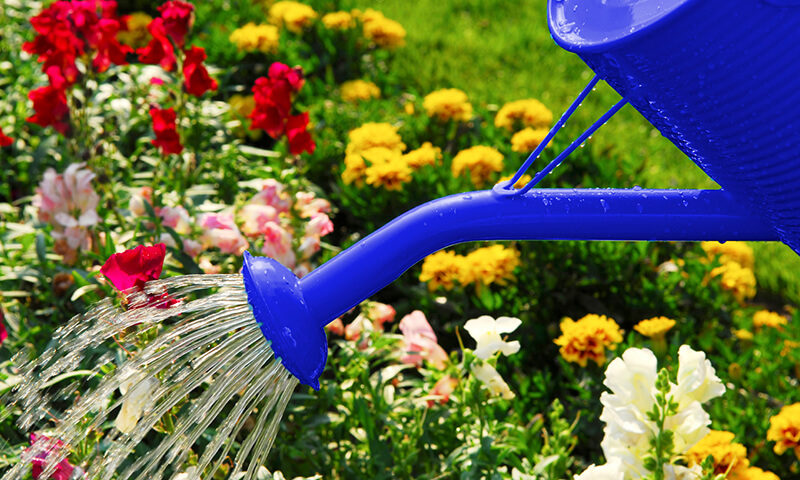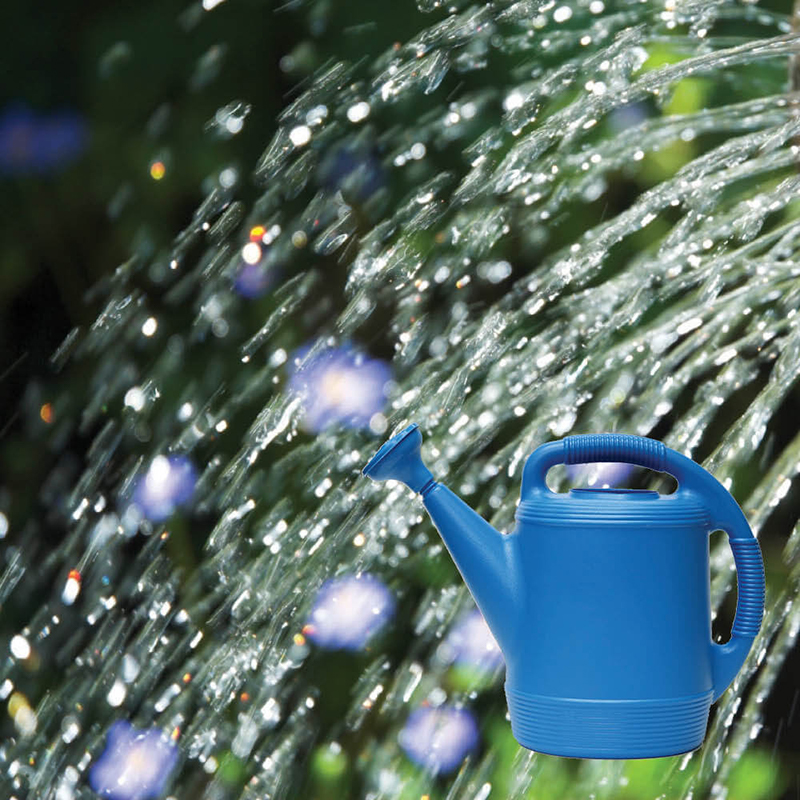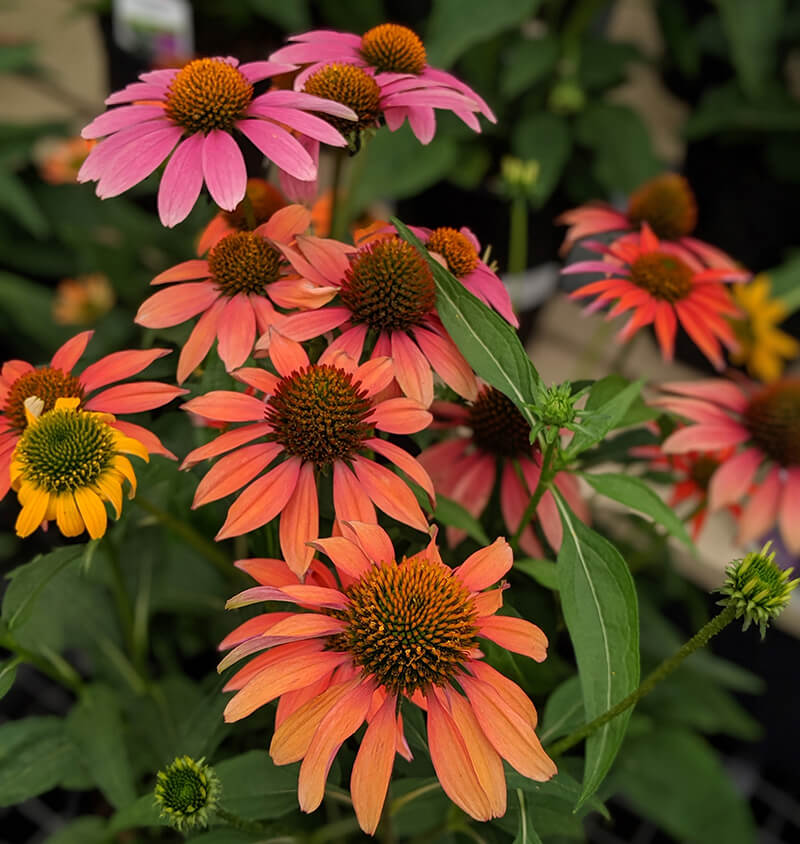Watering When Away and More Summer Watering Tips For You Plants

Time to Step Up Your Late Summer Watering Game!
Where did the other half of the season go? August said, “full steam ahead!” and now we are already a week into the dog days of Summer. This means that the temperatures start to heat up, and even the most avid gardeners might struggle to keep up with watering. Vacations can also lead to an inconsistent watering schedule, and your plants will notice!
Some gardeners definitely dread watering in the pounding heat. For others, they might also engage in wasteful techniques that use plenty of water, but don’t give their plants the moisture that they really need. Luckily, we’ve come up with some quick tips for you to follow to properly water your garden throughout the late Summer months that can save you time, effort, and H2O!
Late Summer Watering Practices
Tool Time:
When watering in intense heat, you need the proper tools to get the job done efficiently and effectively. Our stores carry everything from hoses and attachments, to irrigation systems and sprinklers. Follow these tool tips this season to spend less time working hard in the heat to maintain your garden’s gorgeous flare:
- Watering cans and small containers work great for spot watering plants with different needs by hand. You don’t always need to get out a hose or sprinkler to get the job done. Choose from our nice in-store selection of watering cans, and even make a flashy statement with some of our novelty designs!
- Check to make sure that you have the proper length hose(s) to reach every corner of your garden. Take into account any obstacles in the way, and be sure you aren’t dragging the hose over any delicate plantings to reach more distant dry spots. You might do some serious damage to your mulch beds if you let your hose run rampantly through all your hard work.
- We carry a wide variety of hose attachments in our stores. Come see us for any piece you might need to be successful in your garden!
- Add a water wand to the hose to get the water where it’s most needed – the base of the plants – without needing to bend over repeatedly, which can cause back strain. We’re even trying to save you from aches and pains!
- Use soaker hoses to provide slow drip watering. This allows plants to absorb easily without wasting water by evaporating from foliage, or spraying into the air. Try layering soaker hoses beneath mulch to preserve as much moisture as possible.
- Place a drip irrigation bag on newly planted trees for slow, steady watering that will soak down to the root system without draining away along the surface of the soil.
- See our full list of Irrigation Products Here.
More Best Practices:
- The best time to water is during the early morning hours of a sunny day. This will allow plants to absorb more water before it evaporates when temperatures rise, but won’t leave water to sit on plants overnight when mold can develop.
- If you do not have time in the early morning, hold off on watering until early sunset. Avoid watering mid-day, as the beating sunlight and heat will scorch your plants.
- For your landscape, a good rule of thumb is to provide an inch of water per week minimum. Keep track of precipitation with a rain gauge to avoid wasting water and over-watering. Mother Nature often provides everything your plants need without you having to lift a finger.
- Always water plants and container gardens thoroughly and deeply to encourage deeper, more drought-tolerant root systems. It is better to water less frequently but more deeply, rather than more often but with less water.
- New individual plants that are set out, direct sown seed beds, and sodding often require daily watering until established. Check moisture levels carefully during this period so that plants stay healthy.
- Pay extra attention to plants in containers and hanging baskets as they tend to dry out faster and with greater frequency. These plantings will likely need to be watered daily, or even multiple times a day during intense heat waves.
- Mulches don’t just make plantings look more attractive! They also provide highly important functions like retaining soil moisture and minimizing weeds, which also usurp moisture from your plants. Mulch around plants to a depth of 2-4 inches, refreshing mulch as needed to maintain depth and attractiveness.

Watering When Away
If you’ll be away on an extended vacation, or even just for a few days, make arrangements with a trusted friend or neighbor to “plant sit” while you are gone. There’s nothing worse than worrying about your garden while you’re relaxing on vacation – except coming home to crisp plants that haven’t been watered properly!
What about your houseplants? A few minutes of thoughtful planning and a quick trip to the garden center will ensure meeting your plants’ watering requirements, even when you can’t be home for daily moisture checks.
Popular and effective solutions include:
- Pre-Watering: Before you leave on your trip, make sure your plants are well-watered. Many houseplants can withstand some watering neglect, and if you aren’t gone too long, they may not need any supplemental solutions if you’ve watered them just before your trip. Take care not to over-water, however, or you could be compounding the problem.
- Self-Watering Containers: Planting your houseplants in self-watering pots is truly looking ahead. A reservoir holds water under the pot, and this water gradually travels to the soil via a wick, always keeping the soil moist so long as the reservoir contains water. If you want to use a specific pot without a built-in reservoir, use a conversion kit. Various sizes are available and some use fill tubes. Consider adding liquid fertilizer to the reservoir water to ensure your plant gets proper nutrition while you are away.
- Individual Pot Drippers: These generally hold water above the plant. Various sizes and styles provide water to small and large pots. From beautiful blown glass globes to simple plastic bottles, these allow water to drip down into the soil through a drip-tip inserted in the soil. Because they show above the plant, many people only use them during their vacation, though you may enjoy the look!
- Automatic Watering Systems: These are more elaborate but very effective options. A large water reservoir feeds to clustered houseplants through small tubing attached to drippers inserted in the soil. Larger pots use two or more drippers. These systems pump water on a regular basis using a battery and timer, making them ideal for regular watering when you may be taking a longer trip. These also allow liquid fertilizer in the reservoir so your plants are properly nourished.
Go ahead and enjoy your trip…your plants should be fine!

Water Saving Tips
Periods of drought, heat waves and rising water bills can make any gardener more interested in saving water. Fortunately, there are many ways you can be water the wise way without skimping on the moisture your plants need to thrive.
- Improve the Soil
Prevent soil compaction and aerate regularly to improve the efficiency of how the soil absorbs and retains water. Test the pH and make sure the levels are correct for the plants you are growing. Till in several inches of compost each year and amend with soil conditioner. - Plant Wisely
When deciding what to plant, consider native species as they are adapted to the area and can withstand the local moisture conditions, including periods of low rainfall or drought. Also consider plants that have been specifically bred as drought-tolerant, particularly for more at-risk areas of your yard. Ask one of our team members for recommendations of native plants. - Design Thoughtfully to Save Water
A good landscape design can help minimize water use. Start with graph paper and sketch your home, property lines, water faucets, existing trees and other permanent features. Plant large deciduous trees to maximize summer shade on the hot sides of your house. Combine groundcover in your plantings. This can reduce surface temperature up to 20 degrees. Plant a dense windbreak to cut down on drying winds. Group plants together by water needs and concentrate high water demand plants into one area. Plant rock gardens, native shrubs or drought-tolerant wildflowers on southern exposures.- Is the job too much for you? We’re here to help! Check out our Landscaping Design Services Here.
Tools are Key!
- Use Water-Saving Watering Techniques
Install a drip irrigation system and use other water-saving devices like soaker hoses to minimize water loss. The system of “drip watering” that was originally designed for commercial use is now available to the home gardener. It has become very easy to use and quite effective. Drip watering applies water slowly and steadily directly to root zones in proper amounts. This saves time (less time watering and weeding) and money (less water). It also puts water where it’s needed without runoff or evaporation. - Choose the Proper Watering Tools
Finally, you will want to look at our various styles of oscillating and pulsating sprinklers and choose the sizes and styles that meet your unique landscaping needs. Other assorted nozzles and wands can also make watering easier and more efficient. Ask us about the perfect tools to fit your watering needs!
Beat the Heat!
It doesn’t take much to get started with watering wisely, and not only will your plants thank you for providing adequate moisture, but you’ll love how much your water bill dries up.
Visit us at any location for more tips on effective and efficient watering!
